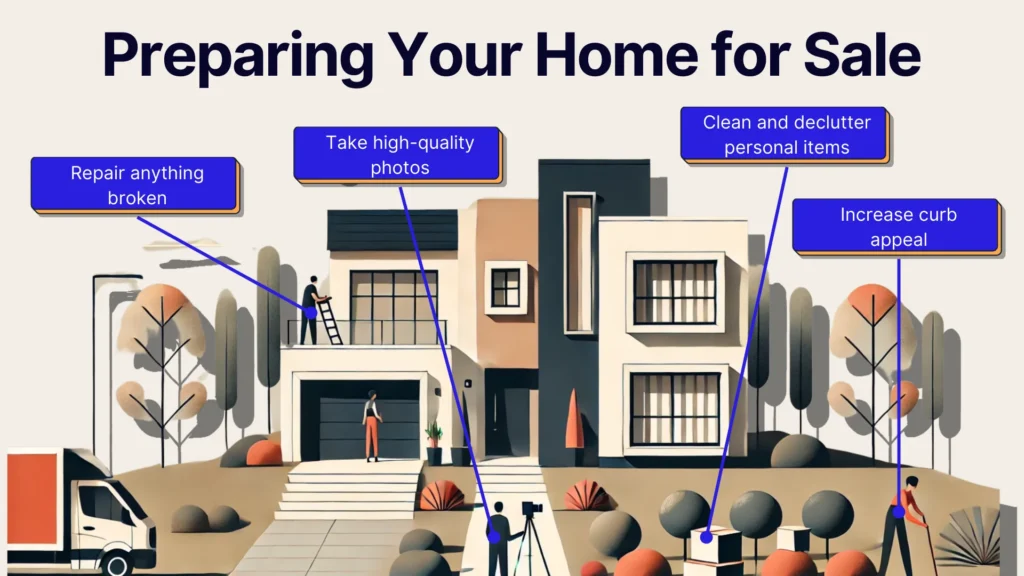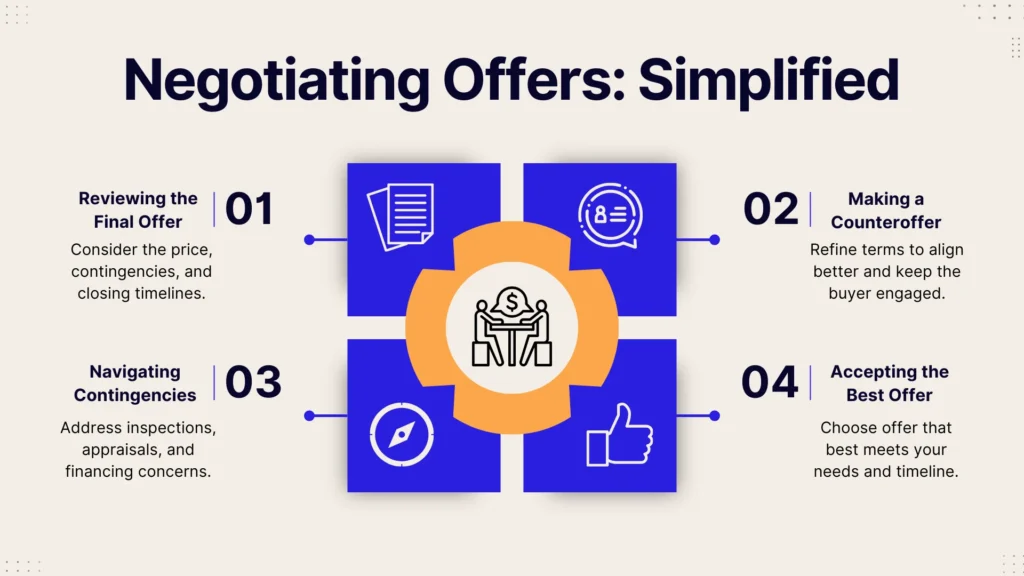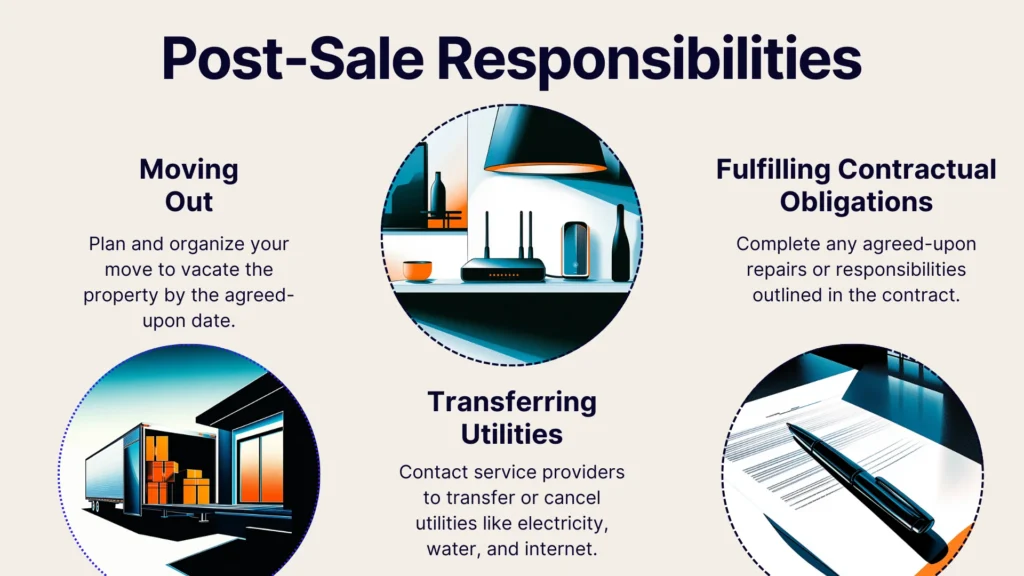Are you considering selling your home but need help figuring out where to start? Putting your house on the market can feel like navigating a complex maze. From prepping your space to attract potential buyers to setting the right price and closing the deal, there's much to consider.
This article explores the initial steps of selling a home, offering insights on preparing your property, setting a competitive price, and maximizing its value. We'll also explore effective marketing strategies, how to handle offers, and the closing process. Finally, we'll touch on common challenges and how to navigate them.
Whether you're a first-time seller or looking to use the latest strategies, this guide equips you with the knowledge for a successful sale. Let's embark on this home-selling journey together, ensuring you're well-prepared for every step.
What Are The Initial Steps In Selling a Home?
Getting your home ready to sell is all about making a strong first impression and setting yourself up for success. By tackling key tasks like cleaning, repairs, and market research upfront, you can attract serious buyers, boost your home’s appeal, and ensure a smooth, profitable sale.

Preparing the Home for Sale
Preparing a home for sale is a crucial initial step in the home-selling process, focusing on maximizing the property's appeal to potential buyers. This preparation phase encompasses several key actions:
- Decluttering and deep cleaning: Creating a clean, spacious environment is essential. This makes the home more inviting and allows buyers to envision their lives.
- Undertaking minor repairs: It’s critical to address visible defects, such as leaky faucets or patching holes. These minor fixes can significantly deter potential detractors and convey a well-maintained home.
- Upgrading features: Applying a fresh coat of neutral-colored paint, updating fixtures, and making minor renovations can enhance the home's attractiveness. These upgrades can substantially improve the home’s presentation and perceived value.
- Staging the home: Whether done personally or through professional stagers, staging is about strategically arranging furniture and decor to showcase the home's best features. It is pivotal in helping potential buyers visualize the property as their future home.
- Enhancing curb appeal: The home’s exterior is the first thing buyers see, making it a critical factor in first impressions. Simple actions like lawn maintenance, planting flowers, or painting the front door can significantly boost the home's curb appeal.
Each of these steps not only helps sell the property more swiftly but also has the potential to increase the selling price, aligning with sellers’ objectives to maximize their return on investment.
Setting a Competitive Price
Setting a competitive price impacts the speed at which a property sells and its final price. Homeowners must thoroughly analyze current market conditions and compare similar properties. The aim is to strike a perfect balance that attracts potential buyers and ensures that the seller achieves a satisfactory return on their investment.
A competitive price reflects the home’s condition, its unique features, and the overall dynamics of the local real estate market. Real estate professionals play a key role at this stage, using their expertise and access to comprehensive market data to suggest a price that aligns with the seller's goals. Effectively, a well-calculated price positions the property advantageously in the market, potentially accelerating the sale process.
It can also incite competition among buyers, leading to more favorable offers for the seller.
How Can You Maximize Home Value?
Maximizing the value of your home is essential for securing the best possible return on your investment. Implementing strategic improvements can significantly enhance your property's appeal and marketability. Here are key strategies to consider:
- Staging your home: Thoughtful staging highlights your home's best features and creates a welcoming atmosphere that appeals to potential buyers.
- Upgrading key features: Modernizing kitchens, bathrooms, or flooring can significantly boost your home's perceived value and buyer appeal.
- Performing maintenance and repairs: Addressing visible issues ensures the home appears well-cared-for, minimizing buyer concerns and objections.
- Improving energy efficiency: Adding features like energy-efficient windows or appliances can attract buyers looking to save on long-term utility costs.
- Depersonalizing the space: Removing personal items allows buyers to envision the home as their own, fostering a stronger emotional connection.
- Hiring a professional photographer: High-quality photos capture your home’s best angles, attracting more online views and potential buyers.
By focusing on these areas, sellers can enhance their home's value and appeal, leading to a quicker sale and potentially higher offers from interested buyers.
What is Involved in Marketing a Home?
Effective home marketing is a comprehensive strategy designed to showcase the property to the broadest audience possible, facilitating a swift and profitable sale. This strategy encompasses several critical components:
Online Listings and Professional Photography
Creating high-quality online listings is essential for attracting potential buyers in today's digital-driven real estate market. A well-crafted listing should feature professional photographs highlighting your home's best features, making it stand out. Clear, bright, visually appealing images can significantly boost interest and engagement.
Pair these photos with a detailed and compelling description, including key features, recent upgrades, and unique selling points. Leveraging popular real estate platforms ensures your home reaches a broad audience, increasing the chances of a faster and more competitive sale.
Open Houses and Private Showings
Open houses and private showings provide prospective buyers with a firsthand experience of your home, allowing them to envision living in the space. Open houses create an opportunity to attract multiple buyers simultaneously, fostering competition and urgency. On the other hand, private showings offer a more personalized experience, catering to individual buyers' schedules and preferences.
To make the most of these events, ensure your home is clean, staged, and inviting. Highlight standout features during these visits and be ready to answer questions to build buyer confidence and interest.
How Do You Negotiate Offers?
Negotiating offers is a key step in selling your home. It requires careful assessment, strategic counteroffers, and management of contingencies to secure favorable terms. Understanding buyer motivations and market conditions helps you stay in control and achieve a successful outcome.

Reviewing Offers and Making Counteroffers
When reviewing offers, evaluating more than just the price is essential, considering factors like contingencies, financing terms, and proposed closing dates. Once you’ve identified an offer that aligns with your goals, you may need to make a counteroffer to adjust specific terms, such as the price or timeline.
Counteroffers allow you to negotiate while remaining flexible, keeping the buyer engaged. Maintaining open communication and responding promptly can foster trust and move closer to a final agreement.
What Are the Steps to Closing a Sale?
Closing a sale involves completing key steps to finalize the transaction and transfer ownership. Understanding each phase ensures a smooth process and avoids delays.
Home Inspections and Necessary Repairs
A home inspection identifies any issues that may need attention before closing. Addressing any necessary repairs before closing helps avoid delays and strengthens buyers' confidence in purchasing.
Appraisals and Property Valuation
An appraisal is often required by the buyer’s lender. It evaluates the property’s market value based on its condition, location, and comparable sales. A fair appraisal ensures the selling price meets financing requirements and avoids issues with loan approval.
Finalizing Paperwork and Legal Requirements
The closing process involves signing critical documents, such as the deed, title transfer, and disclosure forms. Ensuring all paperwork is accurate and complies with local regulations is essential for legally transferring ownership and avoiding post-sale disputes.
How Do You Handle Post-Sale Responsibilities?
Once your home is sold, key tasks remain to ensure a smooth transition for you and the buyer. Handling these responsibilities efficiently helps wrap up the sale and avoid future complications.
Moving Out and Transferring Utilities
Plan to vacate the property by the agreed-upon date, leaving it clean and ready for the new owner. Remember to transfer or cancel utilities such as electricity, water, and internet, and provide the buyer with any necessary information about service providers.
Addressing Any Remaining Contractual Obligations
Ensure all contractual obligations, such as repairs or agreed-upon fixes, are completed before closing. Keep documentation of fulfilled commitments to prevent disputes and finalize the transaction smoothly.

Common Challenges in Selling a Home
Obstacles can delay the process of selling a home or reduce profitability. Being prepared for these challenges can help you address them proactively and achieve a successful sale.
Market Fluctuations and Timing
Real estate markets can fluctuate based on interest rates, economic conditions, and seasonal demand. Selling during a downturn or at the wrong time can impact your home's value and the speed of the sale. Researching market trends and working with an experienced agent can help you time your sales strategically.
Buyer Financing Issues
Buyers may need help securing financing, such as loan rejections or delays in approval. These problems can derail the sale or extend the closing timeline. Prequalifying buyers and ensuring contingency plans are in place can mitigate this risk.
Real estate transactions involve complex paperwork, including deeds, disclosures, and contracts. Mistakes or delays in legal documentation can stall the process or create liability. Consulting a real estate attorney or agent ensures all legal and administrative requirements are met accurately and on time.

Conclusion
Navigating the home-selling process involves many moving parts, from pricing and marketing to negotiating and closing. While it’s natural to encounter obstacles like market fluctuations or legal complexities, the right tools can make all the difference.
Propbox empowers you to succeed with transparency at every step, AI-driven pricing strategies to maximize value, and a seamless, cost-effective approach that eliminates realtor commissions. Ready to transform your selling experience? Join thousands of successful sellers and start with Propbox today.
